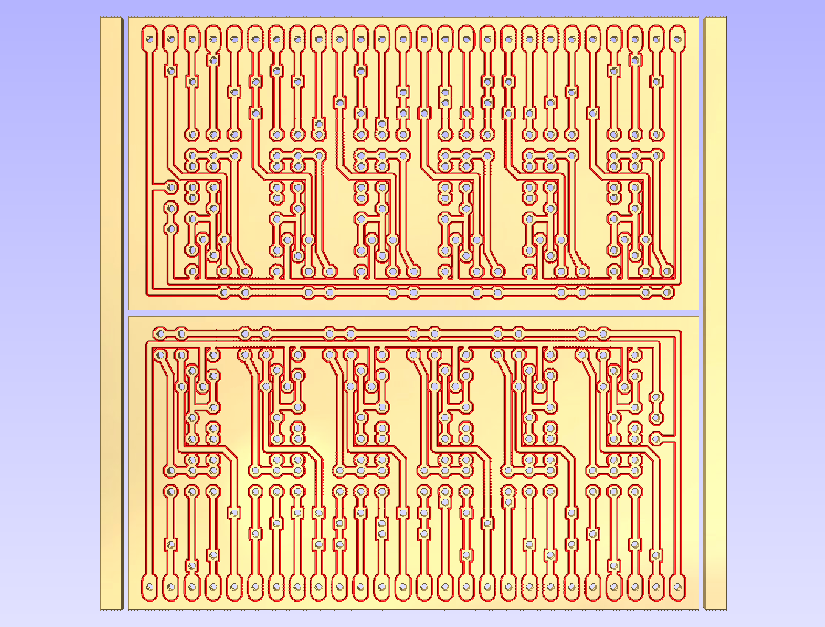An LED Flasher driven by Discrete Transistor 7400 NAND Gates
Here is my LED Flasher based on a discrete transistor 7400 (note the built in power plug):

The basic transistor NAND gate is well known on the Internet. Here is my version:

The reason two gates in series is to make sure it the input and outputs are properly loaded for the simulation. Unfortunately it is also well known on the Internet that the simulation of these circuits is unreliable.
Like the real TTL gates, the supply voltage has to be 5 volts (or the design voltage) for best performance.
The 1 nF "speed up" capacitor is not absolutely necessary but does result in an approximately 50% speed improvement.
How fast is the above circuit? A real 5 stage ring oscillator gave an average gate propagation of 65 ns (about 10 times slower than a real 7400 gate).
The collector resistor is not critical but should not be very much less than the 680 ohm specified.
If a 5k1 ohm bias supply resistor (Rs) is selected (to approximately the input impedance of a real 7400 gate) then the recommended base drain resistor (Rb) is:
Rb=0.72*Rs/(Vcc-2*0.62-0.72)
=1k2 ohm
The selected base resistor should not be very much less than calculated value.
(The above formula was the result of many many simulations and works well in practice.)
The LED Flasher
The LED flasher is very standard:

Here is the simulation:

So here is the discrete version:

And the discrete simulation:

The main problem is the large 50 uF capacitor. To get around this two 100 uF electrolytic capacitors were used back to back with protective diodes.
Finally, the value of the 10k resistors had to be reduced to 4.7k each for oscillation:

The simulation estimates a flashing frequency of about 1.7 Hz, the actual frequency was 1.2 Hz. So the simulation was pretty reasonable.
The discrete transistor 7400 Board layout
I used DIYLC for the board layout. My days of pencil, graph paper and an eraser are gone (it just takes too long). DIYLC needs some patience with the mouse as the software is slow but it is quite easy to use and very flexible. I tried a few board layout tools and this was the best. Best of all it is free.
I used Protostack's prototype board (www.protostack.com if you live in Australia). Its perfect for this application. Great quality and low cost. Unfortunately DIYLC does not have a prototype for it, maybe my next task is to set one up. I just edited a strip-board design in MSPaint to Match the prototype board:

Now finally the finished project:

Regards AlanX
 agp.cooper
agp.cooper




















 Jon
Jon
 Ted Yapo
Ted Yapo
 Ken Yap
Ken Yap
 deftcoyote
deftcoyote
I like what I see here. I am fairly new to discrete transistor gates but learning a lot with my own build and lots of help from others.